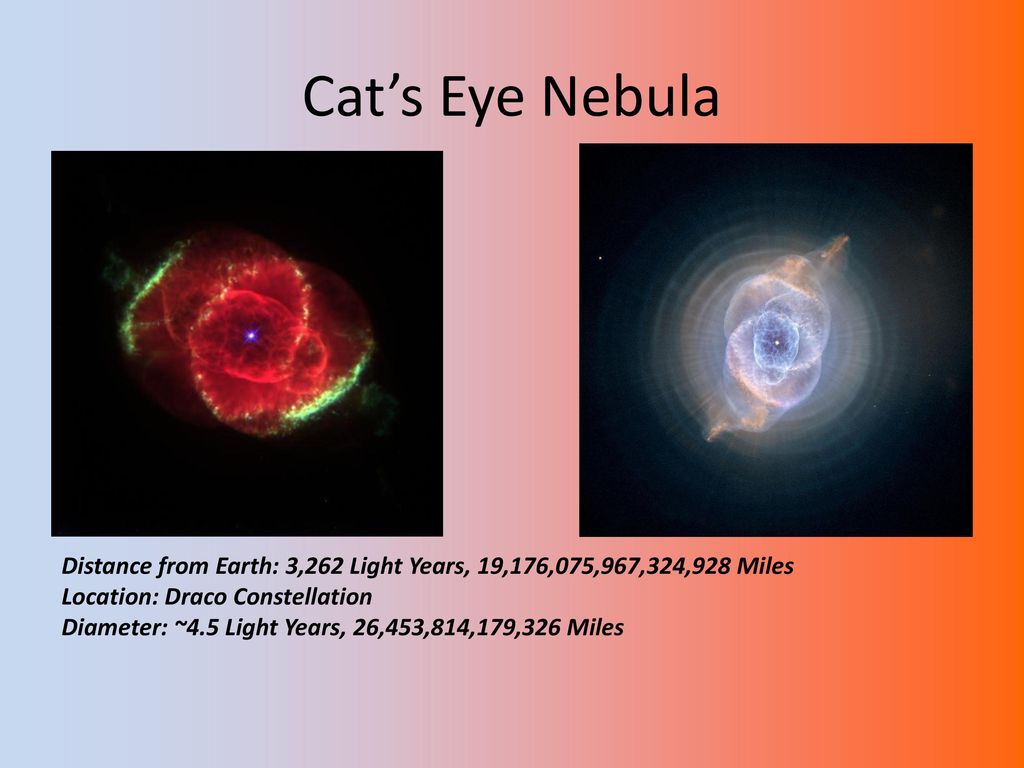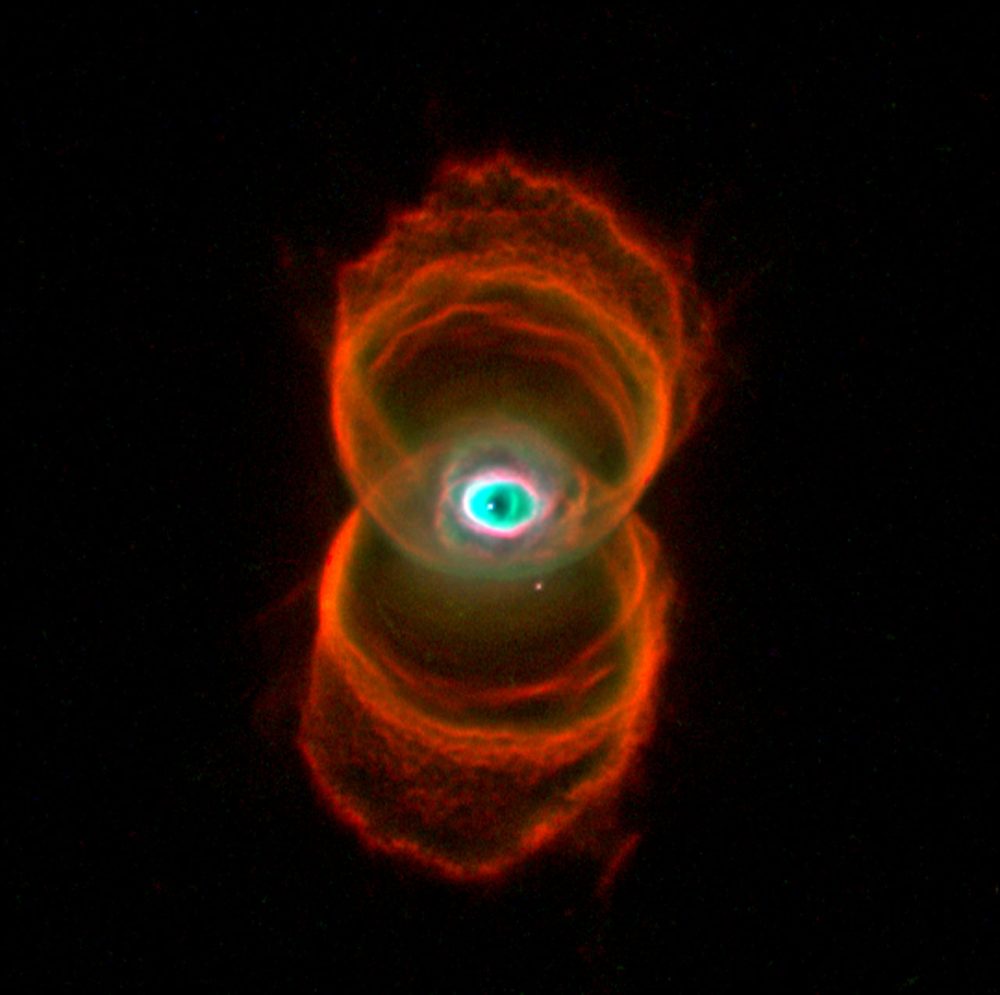Cat's Eye Nebula Diameter

The full beauty of the Cats Eye Nebula NGC 6543 is revealed in this new detailed view from NASAs Hubble Space Telescope.
Cat's eye nebula diameter. The image from Hubbles Advanced Camera for Surveys ACS shows a bulls eye pattern of eleven or even more concentric rings or shells around the Cats Eye. It is a Planetary Nebula expanding gas shell ejected from an end-of-life star in the constellation of the Dragon whose age is estimated at only 1000 years and the distance at only 5200 light years. Find free photos pictures diagrams images and information related to space and astronomy right here at Science Kids.
66 37 595. Cats Eye Nebula NGC 6543 is a planetary nebula. Though the Cats Eye Nebula was one of the first planetary nebulae to be discovered it is one of the most complex such nebulae seen in space.
Although visible eye stars can go to 65 in magnitude the dimmest star for this will be a 60. Discovered by Karl Ludwig Harding probably before 1824 this object is one of the closest to the Earth of all the bright planetary nebulae. Surrounding the Cats Eye is a huge shell from earlier stellar winds with a diameter of close to 45 light years somewhat larger than the distance from the Sun to Alpha Centauri.
Seeing varys between 3-22 FWHM. The Cats Eye Nebula is 3x10 to the power of 16 meters in diameter. A planetary nebula is the glowing gas ejected during the final stages of evolution of a star similar in mass to our Sun.
It was discovered by Herschel in 1786. This image reveals new details of the Cats Eye Nebula catalogued as NGC 6543 one of the most complex planetary nebulae ever seen. The Catss Eye Nebula is a perfect example of a planetary nebula.
This nebula possesses a very vast halo of matter ejected during its phase of red giant. 600 x 590 Photo description. The Cats Eye Nebula.



















